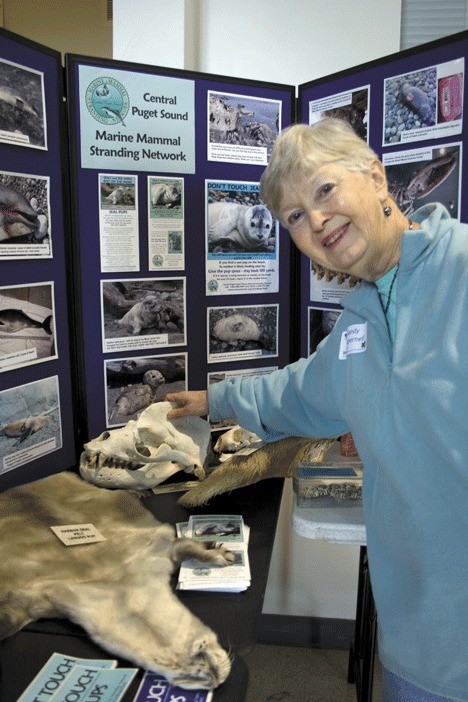The local orca population, also known as the Southern Resident community, may be on its way to recovery.
Although it’s too early to tell, according to Howard Garrett of the Orca Network, a recent baby-boom and fresh forecast for the largest run of salmon on the Columbia River in 70 years may give orcas the boost they need to reach a healthy, sustainable population.
The 2010 Ways of the Whales workshop, held last weekend at Coupeville High School, featured the most recent and interesting research on Southern Resident orcas, such as “family” photos and stories about the whales, how they relate to each other, and how they are much like us in many ways.
More than 150 attendees from Seaside, Ore. to Campbell River, British Columbia and beyond, eagerly listened to Garrett, Orca Network co-founder, director and board president.
Garrett set the stage for the day with “Orca 101,” which included an update on the three local families, or “pods,” and a list of factors that hinder population growth such as pollution, and others that help orcas such as healthy chinook salmon populations.
Chinook are vital because it’s the Orca’s preferred food.
“Eighty-percent of their diet is chinook,” Garrett said of the fatty, high-calorie fish. “They’re like energy bars for orcas.”
Healthy salmon runs equate to healthy orcas, he said.
“Salmon are vitally important to the orca,” Garrett said of the large marine mammal, which is part of the dolphin family. “The Southern Residents have been feasting on salmon along the Salish Sea and Pacific Ocean for thousands of years.”
When salmon are scarce, the mammals draw on their blubber stores. That’s where pollution becomes a problem because they’re stored in the animal’s fat, he said.
Scientists knew “less than nothing” about orcas during the 1960s, Garrett said. An effort to learn more about the animals sprang from the “capture era” of the mid-60s through mid-70s to determine the number of orcas.
There’s no fossil record of these creatures, he said, which makes it difficult to understand the animal’s history; however, scientists estimate that the Southern Resident population could have been as high as 200 at one time. By 1960, the population dropped to 120. In 1976 only 71 Southern Residents swam the sound.
The decline was blamed on a decade of calf removal and the loss of food and habitat, Garrett said.
By 1996 the population rebounded to nearly 100, but again dropped by 20 percent to 78 in 2001, he said. The current population stands at about 88.
Although the local community has hovered in the mid-80s for the last several years, zero death reports and a mini “baby boom” of six calves within the last year, the population appears to be in the midst of a steady comeback.
The one-day workshop also included Dr. Mike Ford of the NOAA Fisheries Northwest Fisheries and Science Center, Dr. Fred Sharpe of the Alaska Whale Foundation, Outreach and Education Specialist Dean Butterworth of the Olympic National Park, River Restoration Director Robert Elofson of the Lower Elwha Klallam Tribe, Washington state Conservation Director Michael Garrity of American Rivers and attorney Steve Mashuda of Earth Justice.



